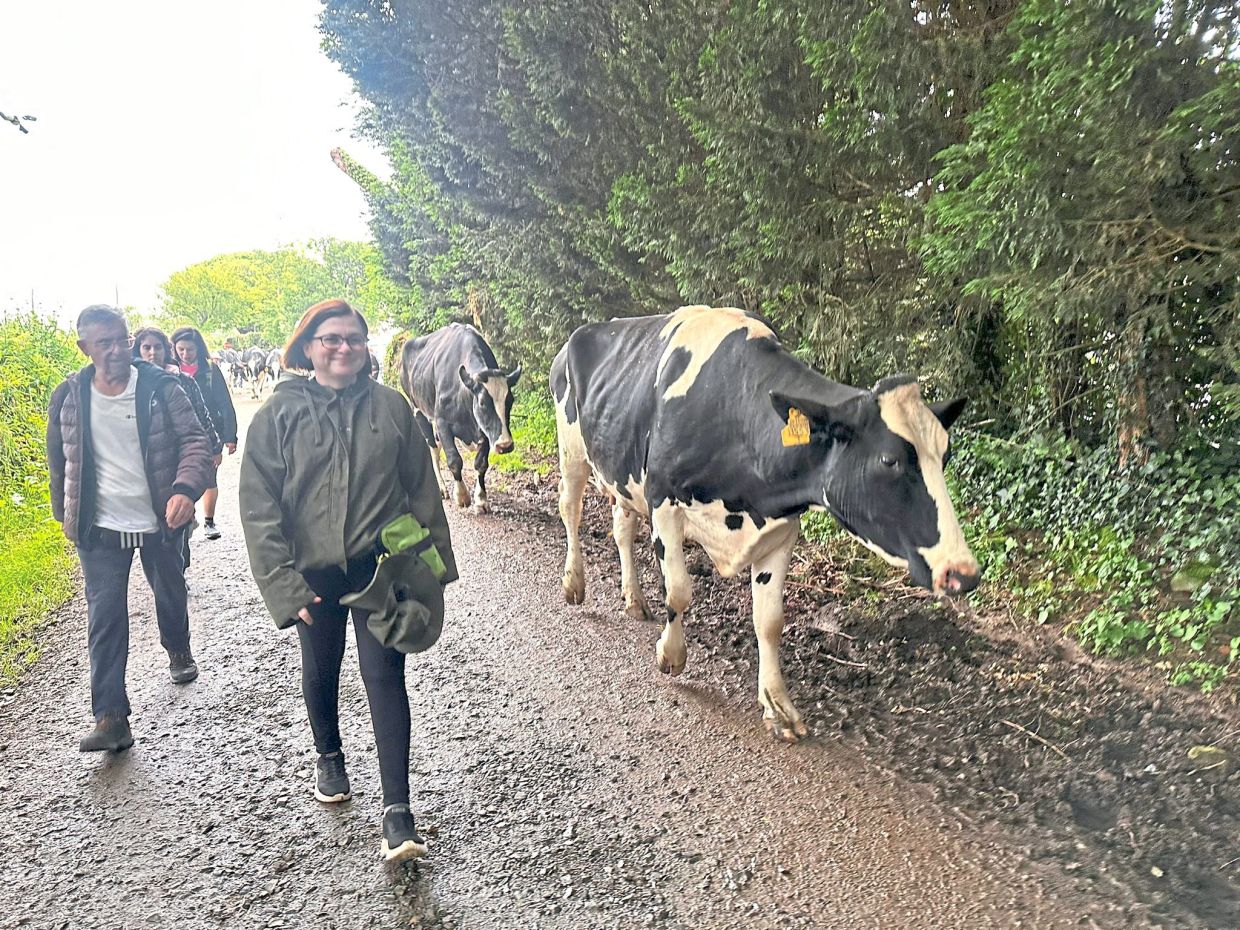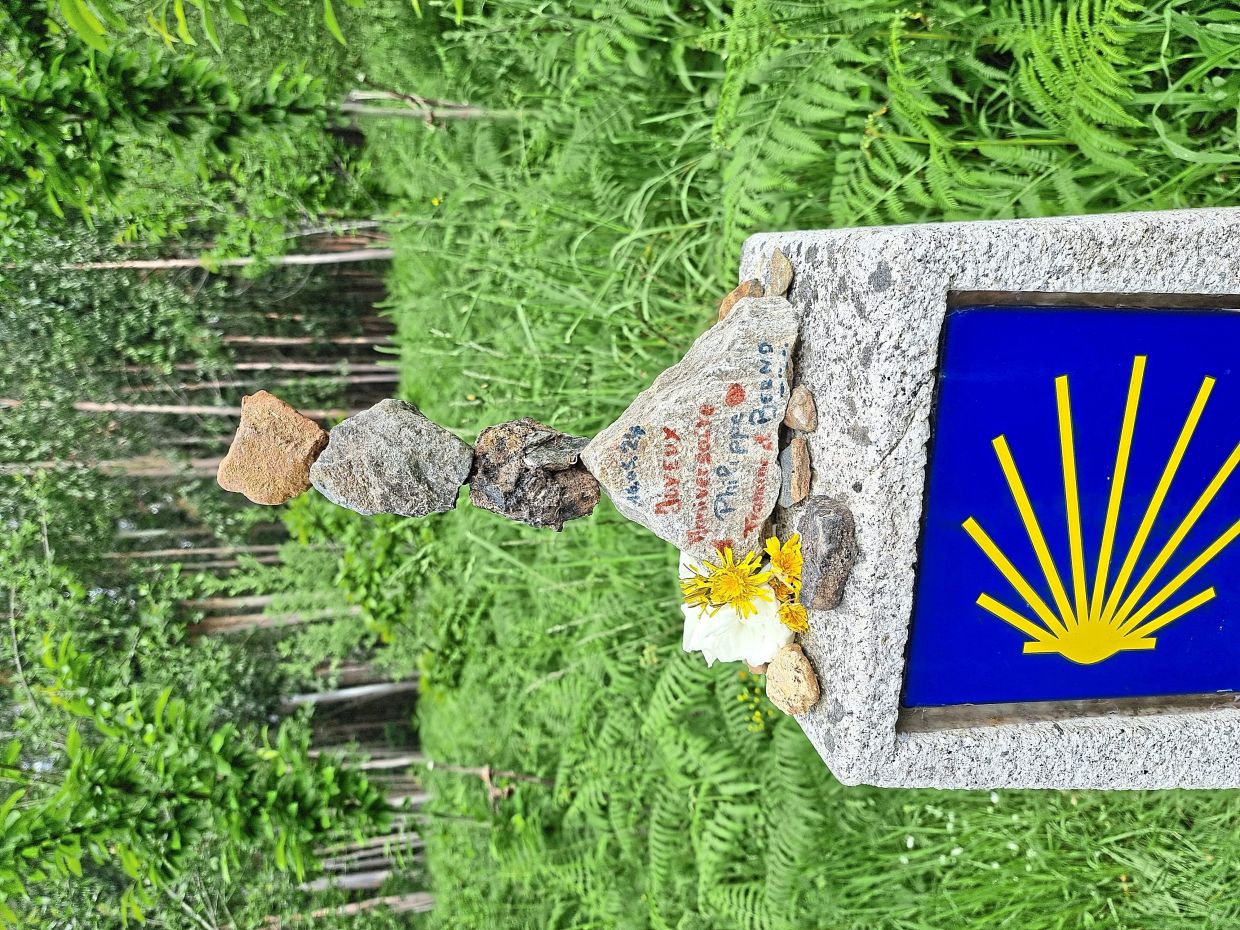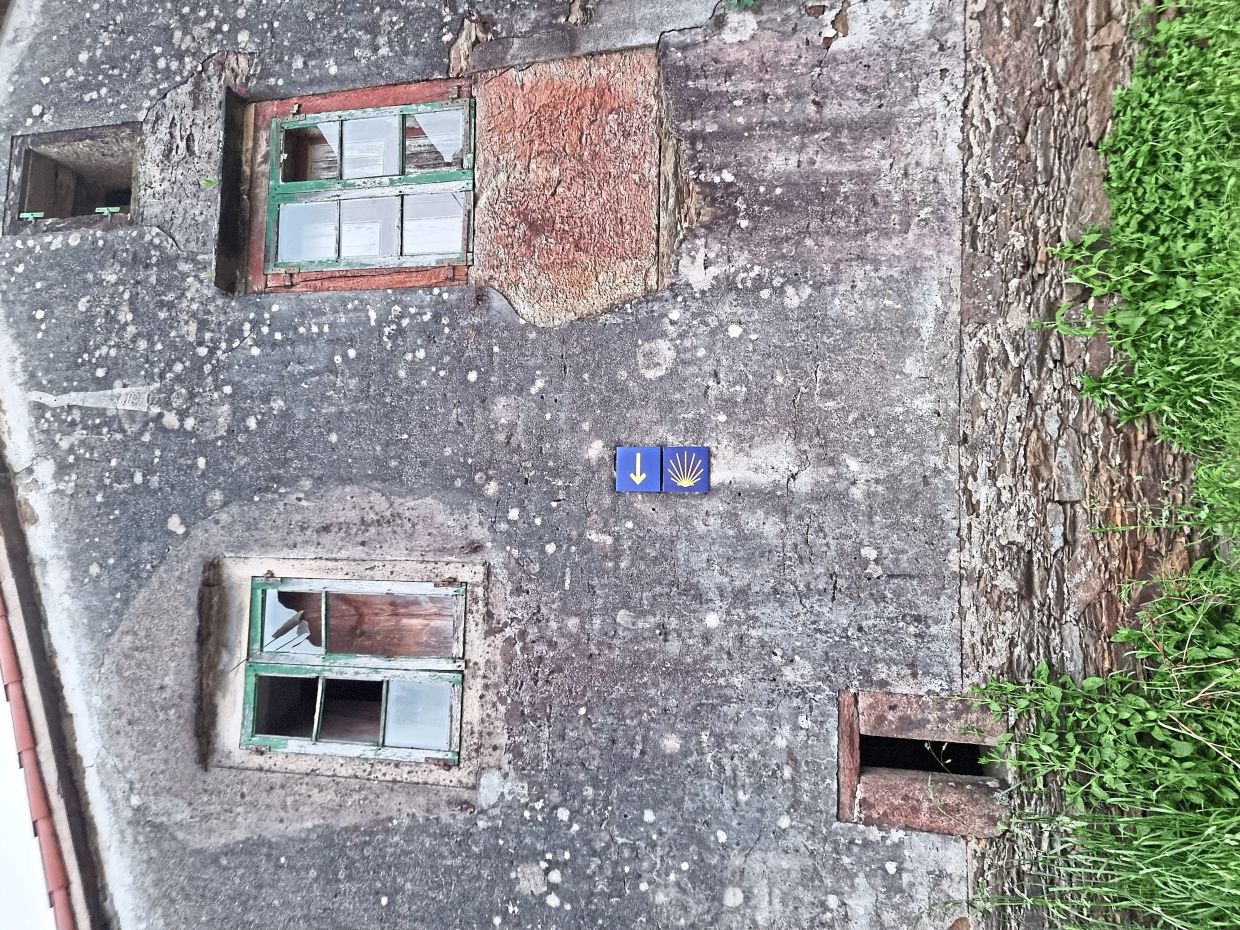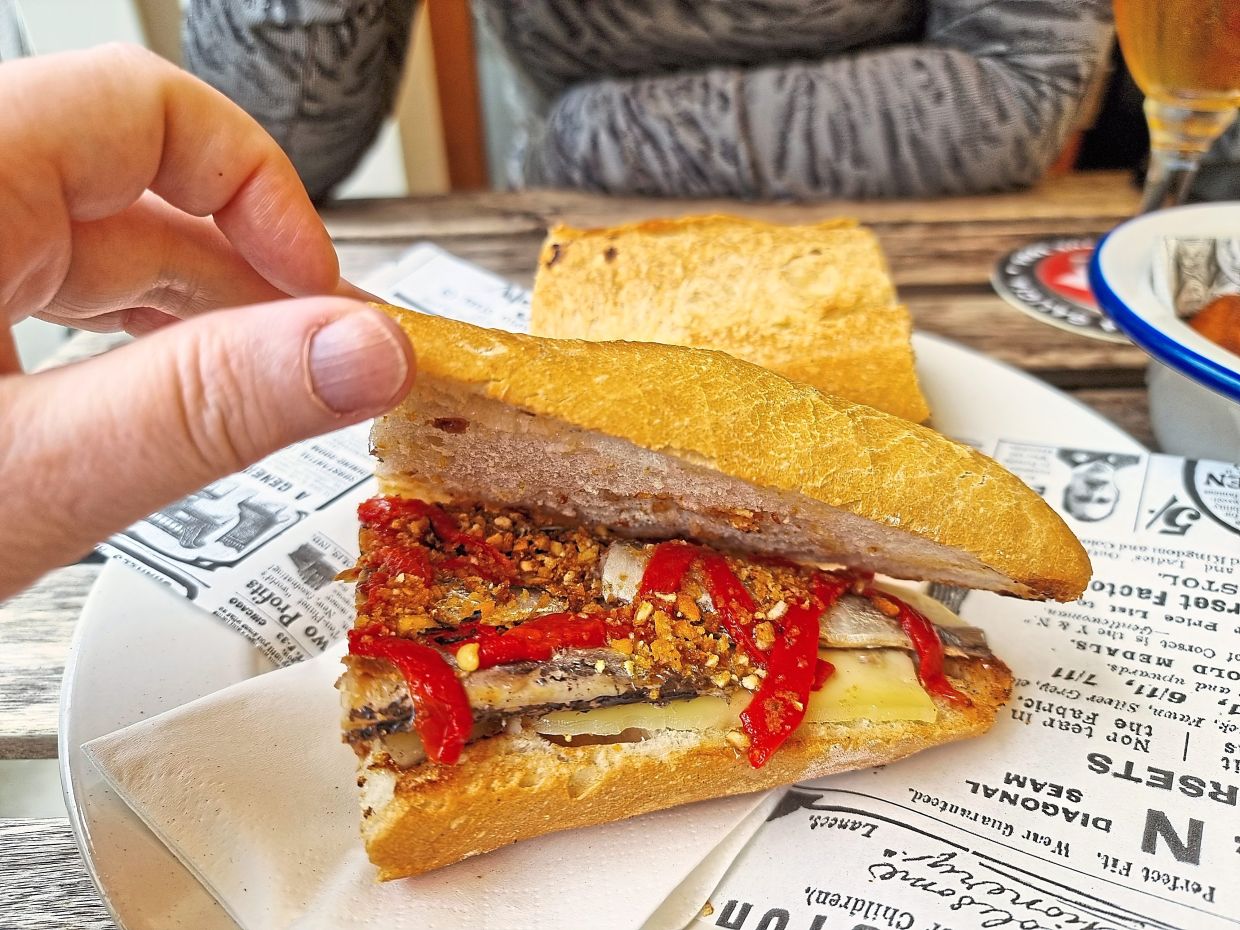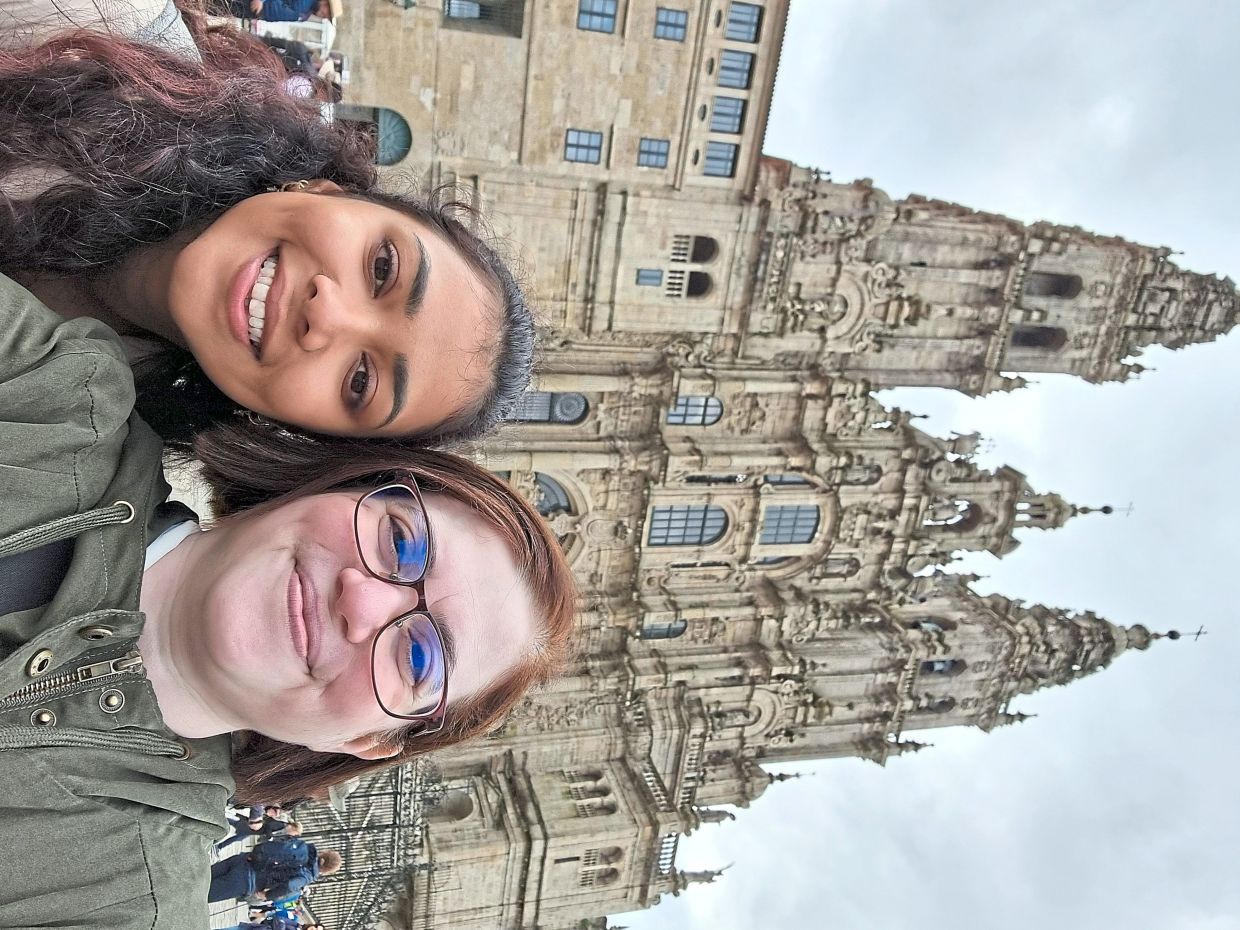The writer (left) and her daughter at the end of their very long walk. — Photos: ANN MARIE CHANDY
They say that your “camino” starts long before you set foot in Spain. And for me this saying really held water. A couch potato who these days prefers to be holed up at home, I was forced to start “training” or at least get used to the idea of walking 10,000 steps everyday before I set off on my Camino de Santiago pilgrimage.
And so for a month or so prior to boarding my flight to Madrid, I began walking around my neighbourhood in Subang Jaya, Selangor – setting off on foot, “circumnavigating” SS14, SS15, trudging through parks, meeting and making an effort to chat with Subang residents for the first time since moving here in 1991! I started making new friends and forming fresh connections with senior citizens and children who are often in the parks walking, exercising and playing.
I started reading again, looking up various blogs and posts from people who had done the walk, savouring How To Walk by Thich Nhat Hanh and poring through 1980s Brat Pack actor Andrew McCarthy’s wise exploration of his relationship with his son in Walking With Sam.
But let me start at the beginning. Some time in November last year, the germ of an idea to go on the Camino de Santiago took root in my brain. “Camino” is Spanish for path, road or journey. I’d heard about this long distance walk from friends and relatives, and I began to take a keen interest.
Since the pandemic, I had very little motivation to move. As trite as it may seem, exercise had been reduced to switching channels on the remote. But here was an idea that coupled a physical activity (walking) with travel (to Spain, no less), connecting with people from all over the globe, and getting in touch with my spiritual side all neatly rolled into one pretty package. What was not to like about it?
After sharing these thoughts with my daughter who is always game for an adventure, the Camino idea quickly metamorphosed into a full-scale plan (complete with Excel sheets, cost breakdowns, suggested routes and accommodations). We were ready to fly to Spain in May, and walk 100km along the northwestern coastline to Santiago de Compostela, the capital of the autonomous community of Galicia.
Trail history
For those who have not heard of it before, the Camino de Santiago – also known as Saint James’ Way – is a path that has been travelled for centuries by thousands of pilgrims leading to an enormous Cathedral in Praza do Obradoiro, Santiago de Compostela. It is said that this is the burial place of the relics of James, one of Jesus’s 12 Disciples, discovered in the 9th century.
There isn’t just one way to reach the Cathedral of Santiago de Compostela; there is a vast network of paths and tracks criss-crossing Europe. Throughout the Middle Ages, pilgrims journeyed from their homes to Santiago de Compostela, creating a multitude of routes converging upon the city and its renowned Cathedral. To officially complete the pilgrimage nowadays, one can walk, cycle, ride horseback, or even sail to the destination.
Many pilgrims walk over 800km on the camino. However, I chose to do the minimum distance allowed to qualify for the pilgrimage – the final 100km. I have had several injuries in the past five years (broken wrist bone, broken fibula and fractured proximal phalanx) and I didn’t want to overextend myself or set myself up for failure from the get go.
The Northern Way
My daughter Raena picked a route called the Camino Del Norte, or the Northern Way, which takes travellers along the breathtaking northern shoreline of Spain, through the Bay of Biscay, beginning in Basque Country and crossing through the Asturias, leading to Galicia. We were excited about the prospect of seeing old towns, lovely beaches and tasting the scrumptious seafood – pulpo a la gallega (boiled octopus) and gambas al ajillo (shrimp in garlic and oil) ... exquisito!
Because I was not confident of walking a great distance, we decided we would bus our way through the initial part of the Del Norte, stopping at San Sebastian, Bilbao and Oviedo before making our way to Vilalba where we began our humble 119km through forests, meadows, hills and valleys, highways and dirt roads.
San Sebastian, Bilbao and Oviedo were lovely places to visit; old towns with tiny alleys, fascinating architecture, beautifully ornate chapels, churches and cathedrals, public artworks in every nook, gorgeously green parks and lovely little cafes and restaurants where you could stop for pintxos, a small snack that you savour with a cerveza (beer) or vermouth. (Pintxo is Basque for thorn or spike, referring to the little toothpicks or skewers which are poked into each snack).
In Bilbao, we made a stop at the Guggenheim Museum – a must-visit! The modern and contemporary art museum designed by Canadian-American architect Frank Gehry stands alongside the Nervion River, which runs through the city to the Cantabrian Sea. It is one of the largest museums in Spain, and the building is a work of art in itself. We were excited to see Jeff Koons’ Puppy, a behemoth West Highland terrier fashioned from plants ... but then realised it was under construction because twice a year, in May and October, all of the plants that make up the sculpture’s exterior are replaced with fresh seasonal varieties.
The weather wasn’t very cooperative and often, we found ourselves decked in our ridiculous ponchos or running for cover from pouring rain. When I grumbled about the wet weather to one grocery shop owner in the small town of Sobrado Dos Monxes, he simply said, “This is Galicia!” as if it were to be expected.
In Vilalba, we stayed next to a medieval Galician tower, the Parador Vilalba, furnished with artefacts, coats of arms and tapestries steeped in history. Next to the tower, stands a new building, in the style of a typical Galician palace, where the hotel rooms and restaurant are located.
Prior to this we had been staying in home-sharing spaces and budget hotels, so the Parador was a real treat for us, before embarking on an early start and big walk the next morning.
Raena and I had already collected our “passport” or official Credencial del Peregrino from the Metropolitan Cathedral Basilica of the Holy Saviour in Oviedo for a small fee of €2 (RM10). The very kind staff who gave us our credentials were thrilled to find out we had come all the way from Malaysia.
The Pilgrim Passport is a document given by an official pilgrim organisation which must be stamped at each place you stay overnight (churches, museums and restaurants also have stamps). The passport acts as both a keepsake and proof that you walked the route, so you can obtain your Compostela certificate or Certificate of Distance at the Pilgrim’s Office in Santiago de Compostela when you finish your journey.
Walking the talk
Our first 25km trek from Vilalba to Guitiriz was tough. We took all day, got drenched in the rain, missed a marker and got lost, spent too much money on lunch at a restaurant in the middle of nowhere and were knocked out by the time we arrived at our lodging.
We had booked a stay at Finca La Cuevona, a rustic home hosted by Pablo Fuentes. It was so cosy and comfortable, and Pablo was so attentive and helpful, we quickly recovered and were ready for our walk the next day to Sobrado dos Monxes. Pablo was kind enough to help us with laundry and gave us breakfast, too.
Later, we found out from another pilgrim – Carlos, an ambulance driver from Madrid – that our host would have also provided us with a picnic lunch if we’d asked! Pablo was elated that we were the first-ever Malaysians to visit his abode and even wanted a photograph as a historic keepsake.
It was here that we also met Mark from Melbourne, Australia whom we would later happily bump into again and again, like long-lost “old friends” sharing anecdotes of our camino, and recommendations for good places to eat at.
Pete and his wife, from Holland, were also friendly people we met along the way, who kept encouraging us along. We recognised a few others whom we gave nicknames – the Turtles (because they looked like turtles with ponchos over their backpacks); and Red and Green, an elderly couple who wore the same red and green outfits everyday.
Ah yes! We had to pack light of course because we must carry our backpacks everyday. I had three sets of T-shirts and pants. After the first day when everything got wet from the rain (despite wearing ponchos and waterproof covers for our bags), we decided to send one bag ahead so we’d have clean, dry clothes waiting for us when we reached Stage 3 of our journey. Thanks to the Correos Paq Mochila service, which was affordable, efficient and easy, many pilgrims choose to send their bags from one hotel to the next, and carry only their essentials with them.
Raena and I had booked all our lodgings in advance unlike many pilgrims who opted for the more “authentic” experience of staying at an albergue, or public hostel, where one is more likely to soak in the spirit of the camino. A standard albergue has one or several dormitory rooms with bunk beds, shared bathrooms and toilets, a kitchen, occasionally a washing machine and a common area. Modern albergues are pretty clean and comfortable, and cost between €7 (RM35) and €10 (RM50).
I wasn’t ready, however, to deal with the prospect of not having enough hot water in my shower or sleeping on the top row of a bunk bed or to put up with someone else’s smelly socks air drying anywhere near me (although Raena might argue that she was still subjected to my smelly socks!).
Perhaps next time I’ll be more game for the communal experience.
Follow the signs
Navigating on the Camino is a cinch. Albergues, churches, hotels, restaurants and other facilities like coin laundromats and grocery shops are all very easy to find. With Google Maps these days, life’s pretty simple. I’d forked out a small fee for international roaming for my phone, and had no issues at all with getting coverage everywhere we went.
As for the camino itself, scallop shells and yellow arrows – the symbols of the Camino de Santiago – guide you all the way to Santiago de Compostela. Painted or printed on walls, sidewalks and tiles, these scallop shells (“Vieira” in Galician and Spanish) have been positioned every 100m-200m, so unless you are totally oblivious to your surroundings, you’ll almost never get lost.
Admittedly, we did miss one of our markers early on in our journey because we were so transfixed by a little church; but thanks to Google Maps, my daughter was able to lead us back to our designated path in one piece.
From Guitiriz we walked to Sobrado dos Monxes, then on to Boimorto, Arzua, O Pino, O Pedrouzo, finally ending up at Santiago de Compostela, where we quickly shot some photos of ourselves outside the celebrated cathedral before heading off to the Pilgrim’s Office to get our certificates. We had left the Pension Lobre in O Pedrouzo at 5am that day so we’d get a headstart as we were worried about the masses that we would have to queue up with at the Pilgrim’s Office.
We reached the place close to 11am and even then I was the 683th person in line to get my credentials approved that morning.
The route we took was relatively easy, but the rains did throw a spanner in the works, making it a very muddy and cold walk. There were a few hilly areas which were challenging for me but generally, the surrounding beauty – verdant valleys, unique flowers, ferns, farm animals, guard dogs, slugs and birds – all kept us quite entertained along the way.
As this is essentially a religious pilgrimage, I incorporated daily scripture readings – I had downloaded the Buen Camino app which included meditations for each stage of our walk. Of special interest to us also was the Museum of Pilgrimage and Santiago, which was created in 1951 with the main goal of documenting, researching and promoting assets related to pilgrimage, as well as the inception and evolution of the city of Santiago de Compostela. Situated on Praza das Praterías, just outside the main cathedral, the museum is a real treat for those interested in history and art.
It’s also free. It’s a pity more visitors have not found their way here.
All said, completing the Camino de Santiago was not just about reaching our destination. It was about the journey itself – the planning, the anticipation, the friendships forged along the way, the breathtaking landscapes, the unexpected challenges, the making do with what we had where we were and the resolve to get the job done everyday so we would be closer to our goal.
I also got to see how capable and independent my daughter is – she took charge of everything – and was very kind to me along the way. It was definitely a lovely experience to walk the camino together. Every step taken, every stamp collected and every laugh and story shared along the way made the pilgrimage a rich and rewarding one.
And as cliche as it may sound, when I look back on the trip, I realise that my first camino was more than just a walk, it was a journey of the heart that began long before setting foot in Spain and I hope will continue long after I am home.
Why the scallop?
Historians suggest that the tradition of using the scallop as a symbol for the pilgrimage may have begun in the Middle Ages when pilgrims travelling to Santiago de Compostela would collect scallop shells from the Galician coast as proof of their journey. The scallop shells were then affixed to their clothes or hats, and as such, became a recognisable symbol of the Camino.
This association has continued to this day, and the scallop shell can be seen on the official route markers, souvenirs, and religious artefacts associated with the Camino de Santiago.
More than just a symbol or a pilgrim badge, scallop shells also had a practical purpose for the medieval pilgrims. They were a handy and light replacement for a bowl so the pilgrims could use them to hold their food and drink on their long journey. Pilgrims would also be given food at churches and other establishments, and a scallop shell scoop was the measure for the food they would be donated.







